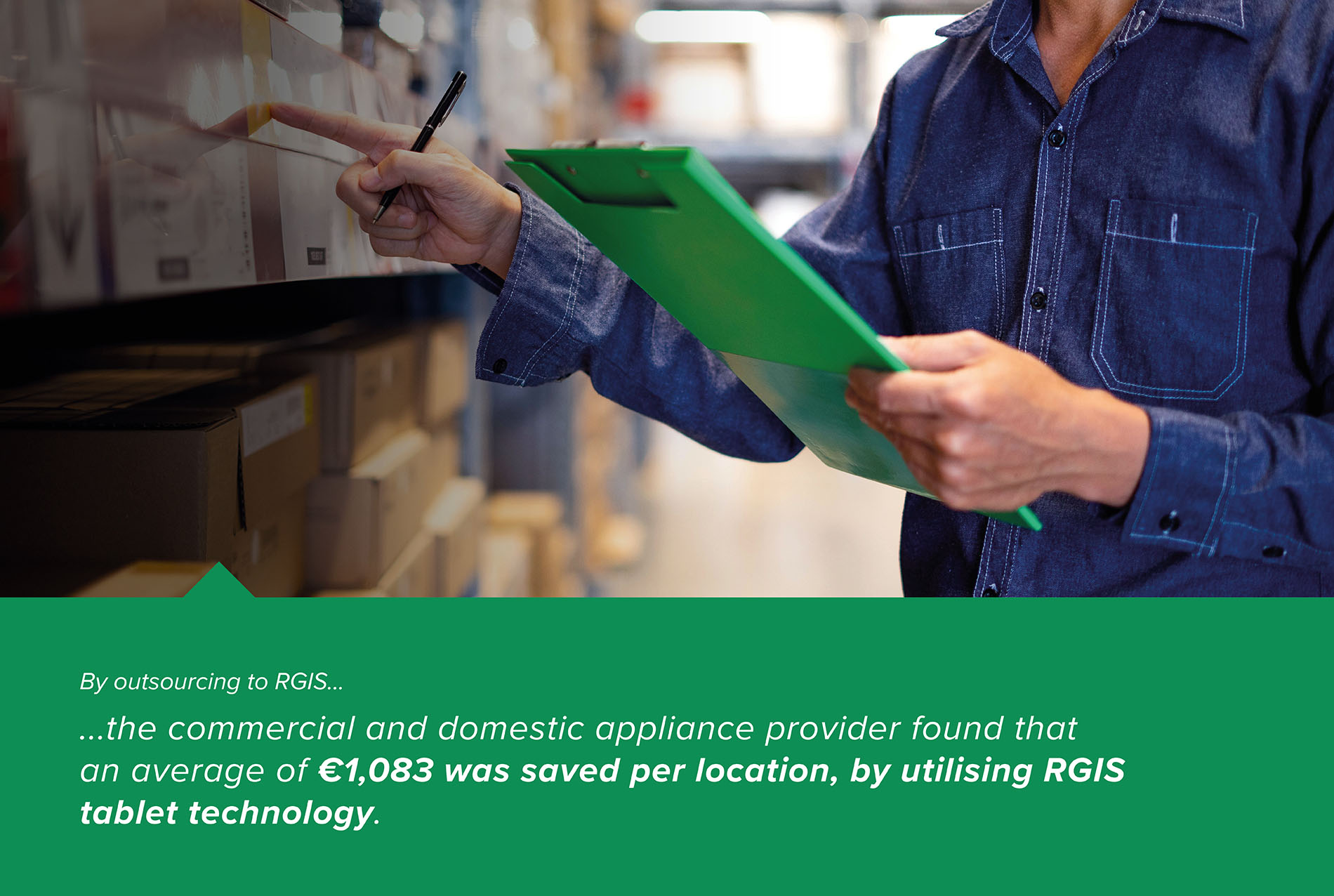Conversion to Paperless Electronic Counts

A commercial and domestic appliance provider with over 40 years’ experience. Stocking a range of domestic and commercial appliances including washing machines, washer dryers, tumble dryers, dishwashers, cookers, ovens, hobs, spin dryers, microwave ovens, vacuum cleaners and small appliances including kettles, toasters, irons. Also stocking a large selection of spare parts.
REQUIREMENT
A large commercial and consumer equipment service provider wanted to convert from paper and pen counts to electronic counts. The equipment service provider required evidence that the electronic process would be less expensive, so required RGIS to provide the following:
- Evidence that the electronic process would be less expensive
- Use the existing, manual process for two years before switching over
- All 27 locations had to be counted in one night
- The existing pen and paper process had to be used to complete the initial inventories
- A new program utilising new technology had to be developed
SOLUTION
The commercial and domestic appliance provider partnered with RGIS to complete the electronic paperless stocktake project, and provided following:
- The move from manual process to electronic occurred over three years
- For the first two years, experienced RGIS teams accurately completed all counts with pen and paper in one night
- The third year, the RGIS equipment and software was implemented into the inventory program, to move to an electronic process
- RGIS’ proprietary software and hardware allowed for a quick data return and an easy inventory process
RESULTS
The commercial and domestic appliance provider found by outsourcing the electronic paperless stocktake project to RGIS, the following was achieved:
- The first year, RGIS was able to accurately determine the actual cost of the customer’s manual inventory
- Due to the complicated manual process, each location cost an average of €1,533 to complete
- After implementing the RGIS inventory software, each site cost an average of €450
- RGIS provided more efficient inventories with no disruption to the team’s regular work
- There was an average savings of €1,083 per location
- The new process was much less labour intensive and thus less expensive